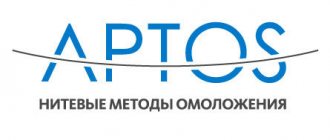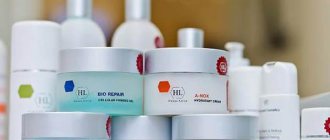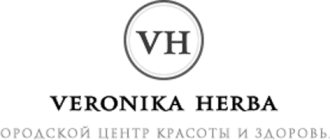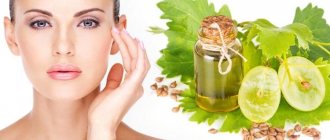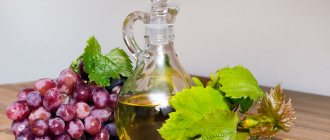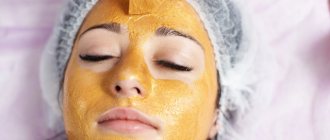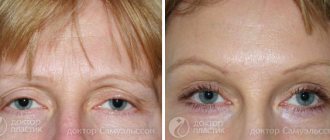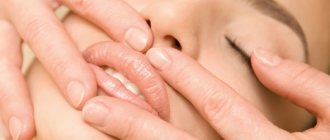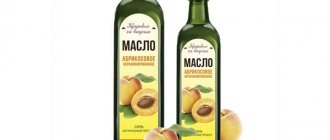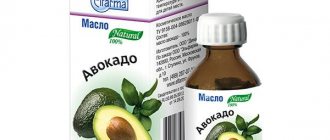From this article you will learn:
- the best threads in cosmetology – rating, reviews,
- what is face and neck reinforcement,
- face lift with threads – price for 2022.
In cosmetology, there are 3 main types of threads that are used to correct age-related changes in the soft tissues of the face and neck - these are mesothreads, reinforcing and lifting threads. The same threads can be used not only on the face, but also to correct age-related changes in the skin on the body (for example, to tighten sagging abdominal skin, breast lifting). At the same time, most patients have only heard about the so-called mesothreads, although in comparison with other types of threads, they give the weakest effect.
Mesothreads (synonym - biostimulating threads) do not achieve a lifting effect, and are intended only to improve the appearance and slightly increase the density of the skin. Those. This type of thread will not allow you to reduce the depth of wrinkles, tighten the oval of the face or get rid of jowls or a double chin. Only so-called “lifting threads”, which are capable of moving soft tissues and holding them in a new position, can radically cope with these problems. This type of threads was developed in 1998 by the domestic surgeon M.A. Sulamanidze, and now they are used all over the world.
Examples of different types of threads -
Well, the last type of thread, which in its effect occupies an intermediate position between meso- and lifting threads, is the so-called “reinforcing threads”. The classic technique of installing these threads can reduce the appearance of wrinkles and folds, as well as significantly improve the firmness and appearance of the skin due to the production of collagen. But with a more complex installation (the “loop” technique), this type of thread also acquires moderate lifting properties. This will allow, for example, with a mild degree of gravitational ptosis, to slightly tighten the tissues to the zygomatic-parotid region (including increasing the volume of the cheekbones and cheeks).
In this article we will primarily talk about the use of reinforcing threads for the face, because... Reinforcing the face with threads is a borderline type of thread lifting that most cosmetologists can perform. Installing reinforcing threads is much more difficult than installing mesothreads, and that is why most cosmetologists work only with mesothreads, which do not require complex manual skills. As for the installation of lifting threads, this is the most difficult thing in thread implantology and, in our opinion, they should only be installed by cosmetologists with a surgical background (for example, with experience in maxillofacial, thoracic or plastic surgery).
Reinforcement of the face with threads –
If a thread facelift with mesothreads is intended to prevent aging, and lifting threads allow for the correction of pronounced age-related changes, reinforcing threads are intended for both prevention and moderate correction. Reinforcement threads are much thicker than conventional mesothreads (the latter are the thickness of a human hair), they are more tensile, and also always have notches for reliable fixation in tissues. Reinforcing threads are installed mainly in patients under 55 years of age who have a slight or moderate degree of soft tissue ptosis.
What is the reinforcing effect? The reinforcing effect is achieved due to 2 factors. Firstly, the threads themselves, until the moment of their resorption, act as a kind of stiffening ribs, i.e. reinforcing frame, which performs the function of tissue fixation. Secondly, threads (especially from polylactic acid) stimulate the production of type 1 collagen, as a result of which so-called “fibrous couplings” of collagen are formed around the threads. The latter persist for some time even after complete resorption of the threads, and continue to serve as a reinforcing frame (Fig. 4).
The reinforcement procedure is performed with the patient's body in a horizontal position. In this position, the soft tissues (according to the direction of the gravity vector) smooth out on their own, and the introduction of reinforcing threads at this moment allows the soft tissues to be fixed in this position. When the patient assumes a vertical position, significant tissue displacement to the initial position no longer occurs. The result is smoothing of nasolabial, labio-mental, and other folds and wrinkles. Thus, by creating a thread reinforcing frame, the primary result of the procedure is achieved.
The secondary result of reinforcement occurs due to the biostimulating effect of threads on tissue. The degree of this effect depends primarily on the chemical composition of the thread. Threads containing polylactic acid have the most powerful effect. The gradual resorption of such threads occurs with the release of active molecules of polylactic acid, which has been proven capable of stimulating the production of collagen by fibroblasts. Moreover, the greater the concentration of polylactic acid the thread contains, the more strongly it will stimulate collagen production.
Below we will look at the best types of threads for reinforcement, including threads made from 100% polylactic acid (PLLA). The threads are simpler - they consist of a combination of polylactic acid and caprolactone (PLLA + PLC), which makes their cost noticeably cheaper. But the vast majority of manufacturers use even cheaper materials - polydioxanone (PDO) or pure caprolactone (PLC), which have virtually no biostimulating effect on tissue.
In addition to the chemical composition of the threads, there is a second important criterion that affects the severity of the reinforcing effect. This criterion is the biodegradation period of the threads. Practice shows that when the threads break down too quickly, “fibrous couplings” of collagen do not have time to form around the threads. Threads made from 100% polylactic acid have the longest biodegradation period. Average values are for threads made from a copolymer of polylactic acid and caprolactone, but the biodegradation of threads made from PDO and pure caprolactone will occur much faster.
Result of reinforcement: as a result of the above processes, the depth of wrinkles and folds decreases, and thus the reinforcement will outwardly appear as a moderate lifting (although reinforcing threads do not have a truly lifting effect, which consists of moving tissues and holding them in a new position). A small exception to this rule is the installation of reinforcing threads with so-called “loops” in the zygomatic area. During the formation of the loops, a pronounced tension of the threads occurs, and they pull the soft tissues to the cheekbone area.
Advantages and disadvantages
Thread lifting has a number of advantages and disadvantages. The high cost of the procedure is due to the hypoallergenic, absorbable material that does not cause tissue rejection. A frame is created, the tightening effect is comparable only to plastic surgery. Modern cosmetological methods of rejuvenation allow you to enjoy a luxurious, blooming appearance for as long as possible.
Pros:
- persistent lifting effect that lasts for several years;
- short recovery period;
- reduced risks of side effects;
- the ability to correct facial features while maintaining a natural appearance;
- does not require lengthy preparation;
- used for face, neck, décolleté, body;
- combined with various hardware and injection procedures.
Minuses:
- high price;
- the method is ineffective if you are overweight;
- has age restrictions.
It is important to remember that a thread lift cannot radically change the contour of the face. The method is effective for unexpressed aging processes and helps prevent further formation of wrinkles and oval displacement.
Indications for reinforcing threads –
The most common indication for the use of reinforcing threads is the correction of age-related changes in the cheek-zygomatic area. In addition, reinforcing threads are the best option for correction in the areas of the shoulders, chest, hips, abdomen, buttocks and hands, and they are many times more effective than conventional mesothreads, the effect of which you most likely will not see at all. In the facial area, there are the following indications for their use:
- reducing the depth of nasolabial and labiomental folds,
- correction of mild ptosis,
- prevention of age-related changes in the middle and lower third of the face,
- optionally – increasing the volume of the cheekbones and cheeks.
There are also schemes for installing reinforcing threads for forehead lifting and eyebrow lifting. But we generally do not recommend that you do either reinforcing or lifting threads for these indications, because... the result is quite controversial, and the trauma is quite large. A much better and longer-lasting result will be achieved by endoscopic forehead lifting/surgical brow lifting.
Important: an important point - the use of reinforcing threads on the neck is completely pointless, and although specialized literature describes neck reinforcement techniques, the result of such techniques tends to zero. As a rule, reinforcing threads on the neck are recommended by those cosmetologists who simply do not know the techniques for installing lifting threads. In addition, reinforcing threads are not suitable for patients with “heavy faces” and significant tissue sagging. Only a slight degree of soft tissue ptosis is acceptable. Also, this type of thread will not be effective for correcting the oval of the face, or if you are planning to remove jowls or get rid of a double chin.
Pros and cons of reinforcing threads –
As you already understand, lifting threads have the most powerful lifting effect, but they have several disadvantages, for example, after the skin is stretched, folds temporarily form in the parotid area. Such folds decrease in about 2-3 months, but if the patient wishes, they can be removed in one procedure through minor surgical correction. In turn, the use of reinforcing threads does not lead to the appearance of such folds. Plus, after installing reinforcing threads, the rehabilitation period will be shorter - about 1.5-2 weeks (for lifting threads - 2-2.5 weeks).
An important point is that the use of lifting threads is, in principle, only possible in patients with thick skin (with moderate or low elasticity). In patients with loose and/or elastosis-prone skin, the effect of lifting threads will be extremely short-lived, and in order to install lifting threads in such patients, you will first have to undergo a course of mesothreads to increase skin density. In turn, for the installation of reinforcing threads, the density and elasticity of the skin do not matter.
The disadvantages of reinforcing threads include the fact that they can only be used with a slight degree of soft tissue ptosis. This is due to the fact that the design of the threads and the technique of their installation do not imply their fixation to fixed anatomical structures (ligaments, aponeuroses). The introduction of reinforcing threads in patients with “heavy faces” will further increase the mass of soft tissues and intensify the phenomena of gravitational ptosis. Therefore, it is very important to strictly follow the indications for their installation.
But if a patient with a deformational (edematous) type of aging is clearly determined to use reinforcing threads, then in some cases this still becomes possible. For example, after a preliminary course of mesotherapy of the face and neck with vascular drugs and lipolytics. These groups of drugs will activate blood supply and lymphatic drainage, remove swelling and pastiness, activate lipolysis and, thus, reduce the volume of fat deposits.
Overview of manufacturers and types of mesothreads
Lead Fine Lift springs are produced in South Korea and have a lifting vector to the puncture point. Available in sizes from 27G to 29G and lengths from 4 to 6 cm. Atraumatic implantation of threads is ensured thanks to high-tech needle sharpening. Used for eyebrow lifting, nasolabial triangle, oval correction. Product quality is confirmed by international quality certificates. Cost 1 piece. — 1200 rub.
Spiral Beaute Lift V Line are manufactured in Korea, needle sharpening is carried out in Japan. Thanks to this, it is possible to minimize the puncture area and shorten the recovery period. Prescribed for the elimination of jowls and double chins, correction of the forehead, and eye area. You can quickly see the result. They have a length of 3.8 and 6 cm, needle sizes are 26G, 27G, 29G. Price - about 800 rubles. for 1 piece
Tornado skrew consists of 2 twisted linear threads placed in a conductor needle. Recommended for rejuvenating areas with moving facial expressions, eliminating wrinkles in the nasolabial triangle, mouth area, and eyes. It is performed under local anesthesia and the material is polydoxanone. Price 1 piece about 300 rub.
Schemes for installing reinforcing threads –
The simplest method of installing reinforcing threads is a fan-shaped installation pattern in the cheek-zygomatic region (without passing the threads through the nasolabial or labio-mental folds). This technique will not give any lifting effect, and is aimed more at preventing age-related changes in this area. However, if threads made from 100% polylactic acid are used, this will give the effect of significantly increasing the volume of the cheekbones and cheeks, and this effect will be better than after any filler.
Simple variants of the fan technique -
But for threads with 90% polylactic acid content, the effect of increasing tissue volume will be much more modest. Let us remind you that polylactic acid has the property of stimulating collagen production (the Sculptra filler consisting of polylactic acid also works in the same way). Thus, threads with 100% polylactic acid are especially suitable for patients with a small amount of soft tissue in the cheekbones and cheeks. But if the patient already has a large amount of soft tissue in the cheekbones and cheeks, then his face will become even rounder.
More complex installation techniques are when long threads are installed through the nasolabial fold and, thus, the end sections of the threads will be located in the tissues of the body of the upper lip. If this arrangement of threads is combined with the “loop” technique, then it is possible to achieve the effect of lifting the upper lip and even invert the upper lip - as a result of which it will acquire visually greater volume (you can see this effect in Fig. 8-10). But in general, this technique is much more complicated, because if the cosmetologist’s manual skills are not good enough, the ends of the threads can pierce the mucous membrane of the upper lip from the oral cavity (24stoma.ru).
Reinforcement technique with a loop - this technique is a simplified analogue of the “Gruzdev loop”, which is used when installing lifting threads. The purpose of this technique is to give the reinforcing threads an additional lifting effect. It works especially well with a fan-shaped arrangement of threads, provided that the location of the threads should not be limited to the cheek-zygomatic region itself, but they should pass through the nasolabial fold, as well as to the labio-mental fold. The technique is that when the cannula is almost completely removed from the injection point in the zygomatic area, a loop is made that tightens the thread. And so on when installing all the pieces of thread.
The tension of the thread leads to movement (lifting) of the soft tissues, and the loop, located subdermally in the malar area, acts as an anchor, maintaining tissue tension. It is this technique that will better increase the volume of the cheekbone area, as well as smooth out the nasolabial and labio-mental folds - compared to the technique of installing reinforcing threads without loops. In addition, this technique allows you to achieve lifting of the upper lip. Please note that in the before and after photos you can even notice the effect of eversion of the red border, which is usually achieved when injecting fillers into the lips.
Reinforcing threads for face lift: before and after photos
The patient had Resorblift® threads with 90% polylactic acid installed. A more complex technique with loops was used, in addition, the ends of 4 threads on each side were fixed in the tissues of the upper lip. What we see in the photo: 1) an instant increase in the volume of the cheek-zygomatic area due to a slight upward movement of tissue, 2) a decrease in signs of soft tissue ptosis and an improvement in the oval of the face, 3) lifting of the upper lip with eversion of the red border. These are the effects that are visible immediately after the procedure. After about 2 months, it will be possible to notice the biostimulating effect of the threads.
Scheme of the thread reinforcement procedure –
If you want to perform the thread reinforcement procedure to prevent age-related changes, then the preparatory stage can be sacrificed. However, if threads are installed to correct changes that have already occurred, patients are usually recommended to undergo a preparatory course, which will not only improve the condition of the skin in itself, but will also increase the effectiveness and duration of the thread reinforcement procedure.
1) Preparatory stage –
If you want to increase the effectiveness of face/neck reinforcement, it is important to prepare the skin for thread implantation. We are talking about injection techniques - this can be a course of mesotherapy or a course of biorevitalization. Depending on the initial condition of the skin, at least 4 mesotherapy sessions may be required (the full course is 10-12 procedures) - with intervals of 7 days between procedures. If we are talking about a more expensive biorevitalization technique, then 3-4 procedures are usually sufficient - with intervals of 14 days between procedures.
The difference between these methods lies in the composition of the drugs used. Biorevitalization procedures use more concentrated and stronger components (compared to mesotherapy preparations). You can learn more about these methods and learn about the differences between the drugs in the reviews using the links below.
→ Mesotherapy regimens → Preparations and biorevitalization regimens
As for the preparation immediately before installing the threads, if there are no contraindications, 2-3 days before the procedure, a drug to increase blood clotting is prescribed (usually Dicinon, 1 tablet 2 times a day). This will reduce the risk of developing hematomas and bleeding. In addition, it is advisable to prescribe an antiviral drug for herpes, such as Acyclovir or Valaciclovir, 2 days in advance. On the day of the procedure, you should not apply any decorative cosmetics to your face.
2) Procedure for installing threads -
The duration of the thread reinforcement procedure will average about 1 hour. Installation of reinforcing threads should be carried out only in a treatment room, with careful adherence to asepsis and antisepsis. There must be a sterile table, the doctor and the patient must be dressed in sterile gowns, and only sterile gloves must be used. The “surgical field” must be carefully processed (as is done during surgical operations).
Anesthesia is very important, especially if the threads will be installed through the nasolabial fold and the ends of the threads will be fixed in the tissues of the upper lip (this area is the most painful). If the threads are installed only in the cheek-zygomatic area and the patient does not have a very high pain threshold, sometimes it is enough to inject an anesthetic directly at the point of skin puncture. If the ends of the threads are fixed in the perioral zone, then cannula anesthesia is necessary.
Cannula anesthesia means that a long cannula (fixed to a syringe with an anesthetic solution) is inserted through a puncture point in the skin. But ordinary dermato-cosmetologists rarely perform anesthesia with a cannula, because... it is more expensive, preferring to prick with a regular needle as the threads are installed. We will omit how anesthesia is technically carried out, and how the anesthetic solution is prepared. The choice of anesthetic in patients at risk is important - patients with diabetes mellitus, bronchial asthma, vascular pathology, and an allergic history.
How to install reinforcing threads for the face: video
Technique for installing threads on the face –
Next we move directly to installing the threads. For this purpose, long cannulas with a blunt end are used. The thread is located inside the cannula, and only its tip protrudes slightly from its spout (Fig. 11). The cannula moves into the tissues, subdermally, i.e. approximately at a depth of 2 to 4 mm. The depth of advancement of the cannula in the tissues should not be too great - otherwise there will be no biostimulating effect on the dermis. It is also impossible to be too superficial, because... otherwise the thread may contour through the skin.
Moreover, in different parts of the face, the depth of the cannula should be different, because this can allow us to either increase the volume of tissue in the cheekbone area, or, conversely, press voluminous fat packets to the bone, making them less noticeable. The depth of advancement of the cannula should also be different for natural folds, for example, where there is more tissue in the area of the fold, the cannula is passed more superficially, where there is retraction of the tissue, deeper. This technique will reduce the severity of the fold.
The tip of the cannulas is not punctured at the end points. Let us remember that the free tip of the thread dangles at the tip of the cannula, and therefore, when the blunt end of the cannula reaches the end point, we simply press our finger on the skin in the area of the tip of the cannula, after which we begin to slowly remove it. Due to the fact that there are notches at the tip of the thread, the cannula comes out, but the thread remains in place. The effect of reinforcement and its duration will be strictly proportional to the number of threads installed.
For the entire cheek-zygomatic area with correction of the nasolabial and labio-mental folds, 9-10 pieces of thread are usually required (on each side of the face). The optimal distance between threads depends on the zone and ranges from 0.5 to 2.5 cm. The installation scheme for reinforcing threads for correcting only labio-mental folds is 3-4 threads on each side of the face. It is basically impossible to correct the corners of the mouth with reinforcing threads, because... this is only possible when using Spring Thread elastic threads.
It is also possible to install reinforcing threads to raise the outer edges of the eyebrows. But the effectiveness of such a technique leaves much to be desired (you can only count on a small degree of correction), with a relatively high price tag.
Correction of hands and abdomen –
Reinforcing threads show high efficiency when correcting hands, especially if threads with a high content of polylactic acid are used. The latter can not only improve the condition of the skin, but also significantly reduce the severity of wrinkles and increase the thickness of the dermal layer of the skin. There are several techniques for arm reinforcement, with threads passing above or below the superficial veins. The first option is preferable, because in this case, the veins are not compressed by the threads.
Abdominal correction with reinforcing threads is an alternative to surgical abdominoplasty. A typical patient portrait for abdominal reinforcement is a woman 28-45 years old, thin, has given birth, with a small thickness of subcutaneous fat, who likes to walk with an open stomach in the summer. In this case, the patient has signs of ptosis (drooping) of the skin and changes in the oval of the navel from vertical to horizontal. Installing reinforcing threads in this case will give a lifting effect and make the navel area more attractive. The effect will last about 6-8 months.
Reinforcement of the mammary glands and buttocks –
With the help of reinforcing threads, you can solve the problem of moderate ptosis, asymmetry or an aesthetically unattractive shape of the female breast. In this case, reinforcing threads act as an alternative to surgical breast lift. Their installation is carried out without cuts. The pronounced effect usually lasts about 8 months, but a small effect will still persist for life - due to the formation of connective tissue strands along the threads (they will serve as stiffening ribs for the tissue).
In turn, a breast lift with lifting threads gives results for 3 years, but their installation is more traumatic, because the threads on one side will have a rigid fixation to the collarbones. In addition to the not very long-lasting effect, another disadvantage of thread breast reinforcement is the high consumption of threads (accordingly, the issue price will be high). Another indication for reinforcement is ptosis of soft tissues and sagging skin of the buttocks. The average duration of the effect of reinforcing threads for these indications will be about 2 years, the maximum – about 5 years.
Comparison with other types of mesothreads
Springs are used for a pronounced lifting effect in areas with fairly dense skin. Due to the ability to restore the original shape, the threads tighten the skin after reinforcement. Used to tighten nasolabial folds, restore the jawline, eyebrows, and body. Installed at the subdermal level, standard length is 5–6 cm.
Linear are smooth monofilaments with a length of 2.5 to 9 cm. They have a wide range of applications. A special feature is the use for thin delicate skin of the eyelids and mouth area. Reinforcement can take place in the superficial and deep layers of the dermis, as well as in muscle fibers. They are characterized by painless administration and can be used without anesthesia. The result lasts up to 2 years.
The braids consist of 2 monofilaments intertwined, the design provides special strength. Areas of application: cheeks, chin, cheekbones, forehead, nasolabial folds, neck, décolleté. Implants are introduced into the middle and deep layers of the dermis, as well as muscle tissue.
Needle - mesothreads with notches, located along the entire length. They can be unidirectional or multidirectional, providing a lasting lifting effect that lasts up to 5 years. They are implanted only in the middle layers of the dermis, they are characterized by the high cost of the material and the painfulness of the procedure.
Recommendations after the procedure –
- Avoid active physical exercise for 1-2 weeks
- refrain as much as possible from sudden facial and chewing movements after the procedure (for 12–24 hours).
- for 2-4 weeks you need to refrain from visiting the solarium, bathhouse, sauna, swimming pool, beach, and you should not take too hot a shower or hot bath,
- it is advisable not to use creams that resolve hematomas (since sclerosis of the resulting hematomas increases the elasticity of the skin in the places of their formation),
- Rarely, after installation of reinforcing threads, it may be necessary to wear a compression mask.
Rehabilitation period
After reinforcement, swelling and painful sensitivity are observed for several days. You need to try not to express emotions through facial expressions, so as not to provoke additional discomfort. The healing process takes about 10 days. The gradual effect will increase over the course of a month, the threads dissolve from 4 to 8 months. During this period, a dense collagen framework is formed, which will support the correction result for up to 4 years.
For prolongation, you can use various injection and hardware procedures. A pronounced result is observed when combined with mesotherapy and biorevitalization. Threadlifting can be repeated after the effect has subsided.
Healing period:
- in the first days, cleansing is carried out using sterile wipes and an antiseptic alcohol-free solution; it is also recommended to apply Panthenol or Bepanten ointments to speed up;
- sleep on a high pillow, keep the pillowcase clean;
- try not to touch your face with your hands, limit contact with various surfaces;
- avoid exposure to direct sunlight for about 3–5 days, use a cream with a high SPF protection factor for about a month;
- It is not recommended to drink alcohol, smoke, visit the bathhouse, sauna, or actively engage in sports;
- You cannot use new cosmetics for a month; there is a high risk of developing an allergic reaction;
- During this period, you should forget about professional cosmetic care; you should not perform scrubbing or peeling at home.
Reinforcing threads in cosmetology: rating
Below we list the best reinforcing threads for a facelift - reviews of which are most positive among dermato-cosmetologists and plastic surgeons. The facial threads are arranged in a rating, which we believe reflects their effectiveness in relation to each other. In addition to the indicated reinforcing threads, there are a large number of others that are not included in this rating, and which we (for one reason or another) do not consider to be sufficiently effective.
RESORBLIFT threads (France) –
There are several options for threads from this manufacturer. The best option is threads made from 100% polylactic acid, which have the most powerful biostimulating effect on fabrics (compared to threads from any other manufacturer). The threads have multidirectional notches and are installed using a cannula. The big disadvantage of these threads is their high price. The cost of the package alone will be about 35,000 rubles (the package contains 4 threads of 26 cm each).
For example, the cost of the second version of Resorblift threads (consisting of 90% polylactic acid and 10% caprolactone) will be about 24,000 rubles. The price is indicated for a package containing 8 threads of 25 cm. Thus, pay attention to how much cheaper threads made from 90% polylactic acid are (compared to threads made from 100% polylactic acid). It would seem that there is only a 10% difference, but this difference greatly affects the severity of the biostimulating effect. However, even this thread option is very good, and we find it more effective than the options below.
Threads DAR-VIN “Invisible” (Italy) –
The old name of this type of thread is SOFTLIFT Invisible, which occurred due to the change in the name of the manufacturer to DAR-VIN. This type of thread consists of 80% polylactic acid and 20% caprolactone, has multidirectional notches, and is installed using a cannula. There are 2 types of packaging. The first option is a package of 8 threads of 25 cm each (with the threads all packed together), and the cost of such a package is about 14,000 rubles. The second option is 10 threads of 20 cm each, with each thread sterilely packaged separately from the others. The cost of such packaging will be about 26,000 rubles.
APTOS Excellence Visage (Russia) –
These are threads from the Russian manufacturer – APTOS. This type of reinforcing thread consists of 75% polylactic acid and 25% caprolactone. The threads have multidirectional notches and are inserted using a cannula. APTOS is a very high-quality and responsible manufacturer of threads, so you can confidently trust these products. The APTOS “Excellence Visage” reinforcing thread set contains 10 threads of 19 cm each, each of which is preinstalled in an individual cannula.
The disadvantage of these threads is their length. For example, for each long pass you need about 12 cm of thread (especially if you are also making a loop). Therefore, a 19 cm thread is only enough for 1 long pass with a loop, and 1 short piece without a loop. There is also a packaging option “Excellence Visage Soft”, which also contains 10 threads in individual cannulas, but the length of the threads here is even shorter - only 11 cm. It turns out that 1 such thread is used entirely in just 1 pass, and even then it is not enough (if the face large).
The fact that APTOS threads come in individual cannulas is their big advantage. However, the chemical composition of these threads (and, as a consequence, the severity of the biostimulating effect) is inferior to the threads of previous manufacturers, which have a higher content of polylactic acid. In addition, a shorter length of threads significantly increases their cost (in terms of the number of installed thread segments).
Interesting fact: by the way, we can proudly say that in the development of threads of the Italian company DAR-VIN (SOFTLIFT), the Russian surgeon D.A. Gruzdev, who is both the president of the Russian “Society of Thread Technologies”, as well as the leader and practitioner a specialist from his own clinic. The developer of APTOS threads is plastic surgeon M.A. Sulamanidze, well known to thread lifting specialists around the world, who also sees patients in one of the Moscow clinics.
Facelift with threads: price in clinics
The cost of reinforcing the face with threads is quite high, and in different clinics the price can differ by exactly 2 times. It is worth considering that a high price is never a guarantee of high professionalism of a doctor, but on the other hand, a highly qualified doctor will never have prices lower than the market average. Prices for a facelift with reinforcing threads are indicated for 2022.
Price for RESORBLIFT threads –
- made of 100% polylactic acid (4 strands of 26 cm each) – from RUB 62,000.
- from 90% polylactic acid (8 threads of 25 cm) – from 42,000 rubles.
Above we indicated the minimum prices, and on average in the market they are usually 20,000 rubles more. When comparing prices for threads from different manufacturers, pay attention to the length of the threads, because... a thread length of 25-26 cm will allow it to make exactly 2 long passes of 12 cm each (and if the face is not too large, then all 3 long passes).
Price of DAR-VIN Invisible threads –
Installation of DAR-VIN Invisible (8 threads of 25 cm each) will cost you an average of 50,000 - 60,000 rubles. Each 25 cm long thread is enough for 2 long passes, or 3 passes if the face is not large. If a smaller number of threads is installed, then the price is calculated for each thread separately - from 7,000 rubles. We do not recommend saving much on the number of threads, because... the fewer threads there are, the less reinforcing/biostimulating effects there will be.
APTOS Excellence Visage –
The package contains 10 threads of 19 cm each. The average price for their installation is about 54,000 rubles, but the price range can be very large - from 38,000 to 60,000 rubles.
APTOS Excellence Visage Soft –
Here shorter threads are used (10 threads of 11 cm each). The average cost of the procedure will be about 47,000 rubles, but the price range can also be very large.
How to install threads cheaper - the only option to install threads at the price of their cost is to become a model at one of the training centers for cosmetologists. In this case, the threads will be installed for you by participants in thematic seminars, under the guidance of a teacher. The second and final option is that some clinics hold promotions for the installation of threads, and in this case the price may be 20-30% lower (but you must remember that the spread of prices between clinics for the same threads can reach 50-100 %).
Too low prices are usually offered by doctors who do not have much experience in installing threads. It is more important for them to “get their teeth into” than to earn money from this service. On the other hand, too high a price does not indicate high quality of services. If you are installing reinforcing or lifting threads, then do it with cosmetologists who have not just some kind of commercial certificate, but a state-issued “advanced training in thread lifting”, and it is even better and safer to do thread lifting in plastic surgery clinics .
I’ll explain the latter in more detail. Regular dermatocosmetologists have never performed invasive procedures like thread lifting before. Therefore, their manual skills, which are needed for anesthesia in the maxillofacial area, to work deep in the soft tissues of the face and neck, are certainly inferior to the manual skills of maxillofacial and plastic surgeons. In addition, which is very important, dermatocosmetologists have problems with observing the rules of asepsis and antisepsis, to which hospital-trained surgeons are accustomed “from birth.”
For example, if a cosmetologist works without a nurse (and most often this happens) - this is a guarantee that complete sterility a priori cannot be achieved. And if sterility is not so important when installing biostimulating threads, then when installing lifting and reinforcing threads, it is the key to the absence of severe purulent complications. Of course, there are also ordinary cosmetologists who, due to their experience, have quite decent manual skills and observe the principles of sterility, but statistically their number is very small.
Complications -
Usually, after thread reinforcement, there are no hematomas and no significant tissue swelling. This is due to the fact that work in the depths of the tissue is carried out with a blunt-pointed cannula, which pushes the vessels and nerves apart, rather than cutting them like a sharp-pointed needle. In addition, the installation of reinforcing threads is carried out subdermally, and at this depth there are simply no large vessels that can be injured. Therefore, immediately after the procedure, as a rule, you will not see any hematomas or swelling, but there will be slight redness of the skin.
However, if the doctor inserts the threads too deeply, then injury to the vessels is still possible even with a cannula, and in this case the bleeding may be severe enough that it may require stopping the procedure. But in small hematomas along the threads there is a big plus. The fact is that sclerosis of such hematomas leads to an increase in skin density and, thus, the effect will be better (no matter how strange it may seem).
If there are technical errors (deep insertion of threads), the integrity of various formations, for example, the excretory duct or the capsule of the parotid salivary gland, may be damaged. Most often, inexperienced cosmetologists injure the duct, which leads to the formation of salivary fistulas and many problems that require elimination. If the doctor inserted the threads too superficially, there may be persistent retraction of the skin along the thread (thread contouring). If the threads are inserted too deeply, there may be, on the contrary, protrusion of the tissue.
Incorrect cutting of the ends of the threads at the point of skin puncture can lead to skin injury and the development of inflammation. The inflammation may appear as a small inflamed bump (papule without pus). There may also be severe infectious complications, such as abscess and cellulitis, which can occur due to violations of sterility during the procedure, damage to the salivary gland duct, improper cutting of the ends of the threads, and lack of proper wound care on the part of the patient. Another complication is exacerbation of herpes.
Opinion of cosmetologists
On forums, cosmetologists share their experience in installing mesothreads.
The review describes how to get rid of severe ptosis; therapy includes the use of threads.
The participant writes that the implantation of mesothreads could not lead to dysfunction of the upper lip.
The user writes about the recovery features and pain of reinforcement with different types of materials.
Contraindications –
The main contraindications to the facelift procedure with threads:
- pregnancy and lactation,
- acute infectious and chronic diseases in the acute stage,
- autoimmune diseases,
- systemic blood diseases,
- tendency to form keloid and hypertrophic scars,
- taking blood thinning medications (aspirin, anticoagulants); taking such medications should be discontinued 3-10 days before the procedure, be sure to obtain permission to do so from the doctor who prescribed them. We hope that our article was useful to you!
Sources :
1. Additional. prof. author's education on thread lifting (
,
), 2. Personal experience of clinical application, 3. National Library of Medicine (USA), 4. American Society of Plastic Surgeons (USA), 5. “Thread implantology” (Kodyakov A.A., Fedorov P.G., Aleksandrov V.N.).
Patient reviews
There are mostly positive reviews about the procedure on the forums.
The user writes about the good results of a facelift and the elimination of a double chin, a gradual increasing effect.
The user writes about threads appearing when facial expressions change.
The review states that for thin threads, it is better to carry out biorevitalization before thread lifting.
The participant writes about the long recovery period and the lack of results.
